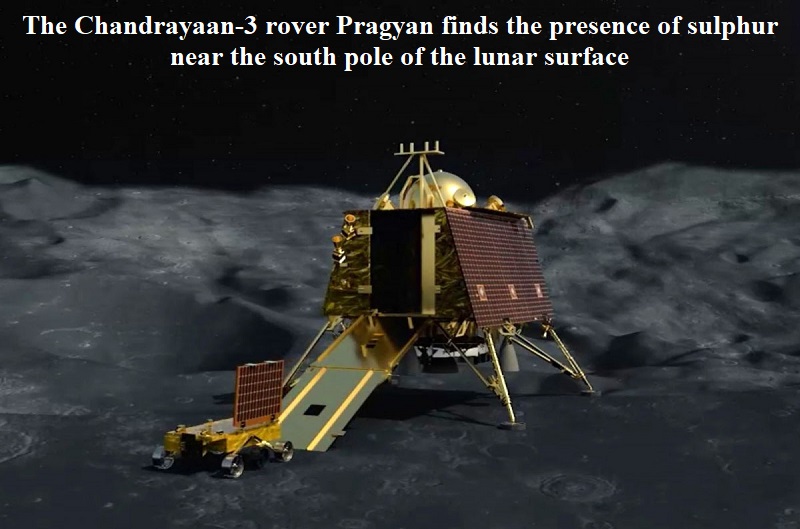
The Indian Space Research Organisation (ISRO) has reported that the Chandrayaan-3 rover, named Pragyan, has identified the presence of sulphur near the lunar south pole, marking a significant discovery.
During its groundbreaking mission of conducting in-situ measurements to ascertain the elemental composition of the lunar surface, the rover utilized the Laser-Induced Breakdown Spectroscopy (LIBS) instrument to identify the presence of sulphur.
The presence of sulphur in the region has been definitively confirmed through these in-situ measurements, a feat that was previously unattainable using the instruments onboard the lunar orbiters.
LIBS is a scientific method that involves analyzing the composition of materials by subjecting them to intense laser pulses. This process entails directing a high-energy laser pulse onto the surface of a material, such as rock or soil. Consequently, the laser pulse generates a highly localized and exceptionally hot plasma.
The plasma’s emitted light is meticulously analyzed and resolved spectrally, with the aid of detectors like Charge Coupled Devices. Since each element emits a distinct range of light wavelengths when present in a plasma state, the elemental composition of the material is precisely determined. This technique enables researchers to decipher the constituents of the lunar surface in a detailed and accurate manner.
The Chandrayaan-3 rover’s discovery of sulphur at the lunar south pole highlights the rover’s groundbreaking capability to conduct on-site measurements, providing insights into the composition of the moon’s surface. This is particularly significant as it offers valuable information that was previously beyond the reach of orbiting instruments.

Post Your Comments